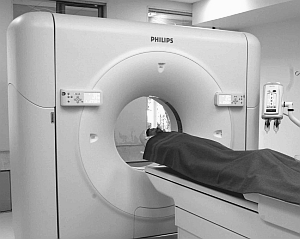 17th December 2009 : G.E. Healthcare has been named in a class action lawsuit filed in Alabama Wednesday by patients who may have received high doses of radiation.
17th December 2009 : G.E. Healthcare has been named in a class action lawsuit filed in Alabama Wednesday by patients who may have received high doses of radiation.
The exposure occurred during routine brain scans. Plaintiffs claim the manufacturer designed poor safety features into the scanner.
The Food and Drug Administration (FDA) is warning hospitals to check the setting on their CT perfusion scans that look for internal injury, blockages, and tumors, after hundreds of patients in Los Angeles and Huntsville, Alabama, received a radiation dose eight times the recommended amount.
The Huntsville Times reports on a teacher in Madison County Schools, Becky Coudert, named in the lawsuit. She had a scan on September 8 and soon afterwards began losing her balance. Then her hair fell out in a band around the back of her head from ear to ear.
15 patients are represented in another action and have joined with a California law firm.
General Electric issued a statement last week that it is cooperating with an FDA investigation as well as checking scan protocols at the Huntsville Hospital.
“GE has also confirmed that the GE scanners at Huntsville Hospital are operating as intended,” read a statement emailed last week by company spokesman Arvind Gopalratnam. “As with all CT head perfusion scans, the radiation dose delivered was a decision made by healthcare providers during the treatment of stroke patients.
“This decision was based on the medical expertise of the Huntsville staff as well as the needs of the patient.”
The lawsuit says G.E. Healthcare failed to adequately test its products and that the scanners do not have the necessary safety features that warn of an overdose.
The suit asks that a minimum, a $5 million fund be established to cover the future healthcare costs of patients and to monitor for future cases of brain cancer.
Just this week, two published studies on CT scans in the Archives of Internal Medicine, report that their use seems to pose a greater risk of cancer than previously thought and may be responsible for an estimated 29,000 future cancers, particularly those in the abdomen and pelvis. #
